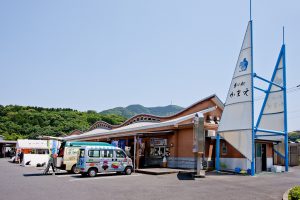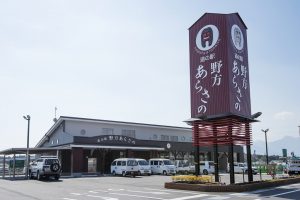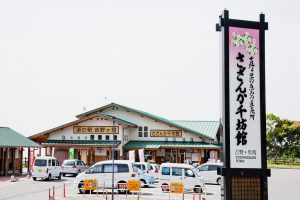Roadside Station Kinpou Mokka-kan
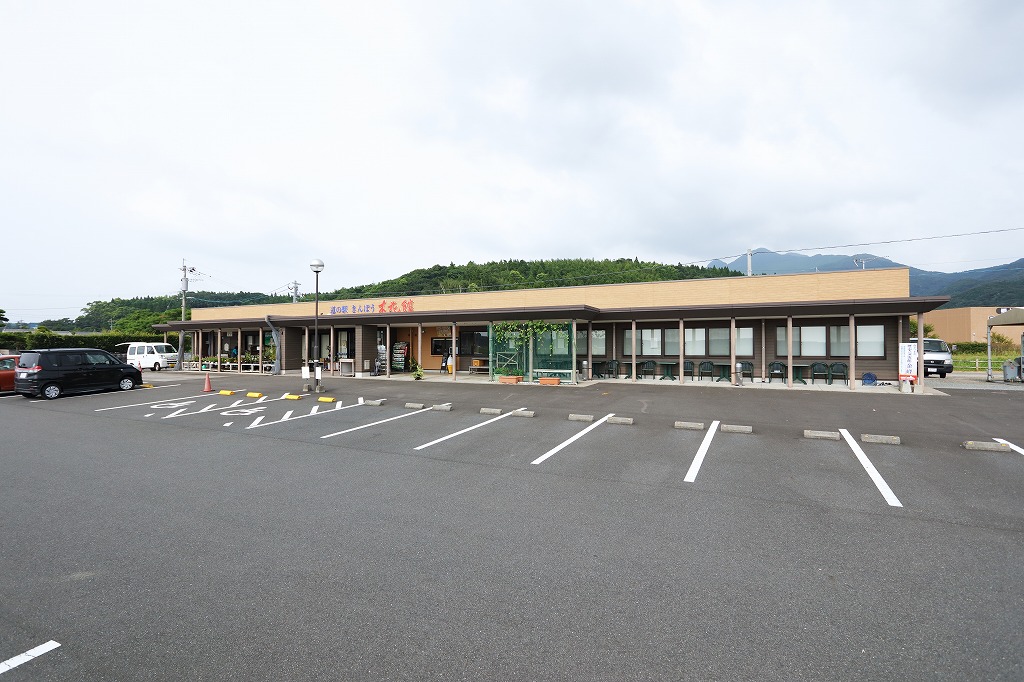
Index
Delicious new rice before anyone else!
Station also popular for its rustic country soba noodles
Kinpou" in the station name comes from the local sacred mountain Kinpou. The beautiful shape of the mountain is likened to the sleeping face of a beautiful woman and is called "Bijin-dake" (Mt. Beauty) by the locals. The pride of the region is "Kinpou Koshihikari," a super-early rice. New rice is shipped from July, making it the earliest new rice on the mainland. This specially cultivated rice is grown with spring water from Mt. Kinpusan, and is sold as a Roadside Station original by six farmers. Also, since the area is also a soba (buckwheat noodle) production area, soba making experience (2,980 yen per person, reservation required) is offered. Of course, the restaurant offers a wide variety of soba menus, and you can even have handmade soba made by yourself. The rice balls made from Kinpu Koshihikari rice that accompany the soba are also delicious!
Roadside Station Kimbo Kibokan Basic Information
| Location | 1383 Ikebe, Kinpo-cho, Minamisatsuma City, Kagoshima Prefecture |
|---|---|
| Phone number | 0993-77-3833 |
| Business Hours | 9:00-18:00 (November-February: ~17:00) Restaurant 11:00-14:30 |
| Access | 30 minutes from Ibusuki Skyline Taniyama IC |
| Official HP | http://www5.synapse.ne.jp/konohanakan/ |
Map of Roadside Station Kimbo Kibakan
Roadside Station Kimbo Kibokan Gourmet Information
Local product: pumpkin
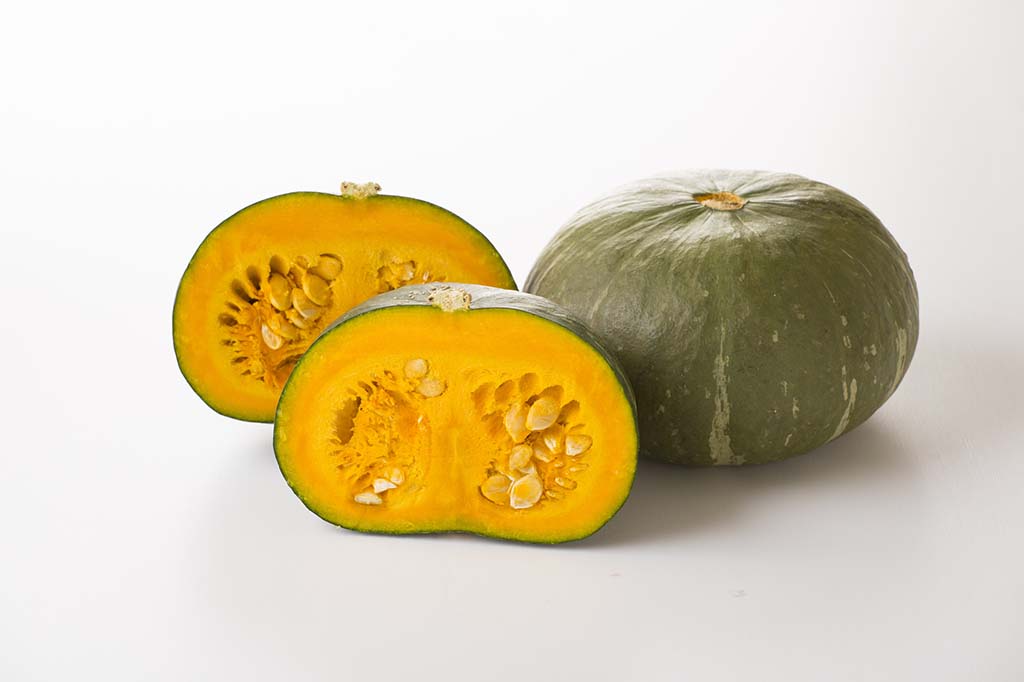
Kagoshima Prefecture is the second largest producer of pumpkins in Japan. Among them, "Kaseda's Kabocha" produced in Kaseda Town, also in Minamisatsuma City, is a brand-name pumpkin. The variety is "Ebisu," a sticky pumpkin with a moist texture, and the characteristic of Kaseda's pumpkins is that they "ripen completely in the field. In other words, the pumpkins are harvested after they have absorbed nutrients and fully ripened in the field. This is why the flesh is brightly colored and rich in beta-carotene. Even the skin is delicious.
©P.K.N.
Buy this Kaseda's Dune Rakkyo
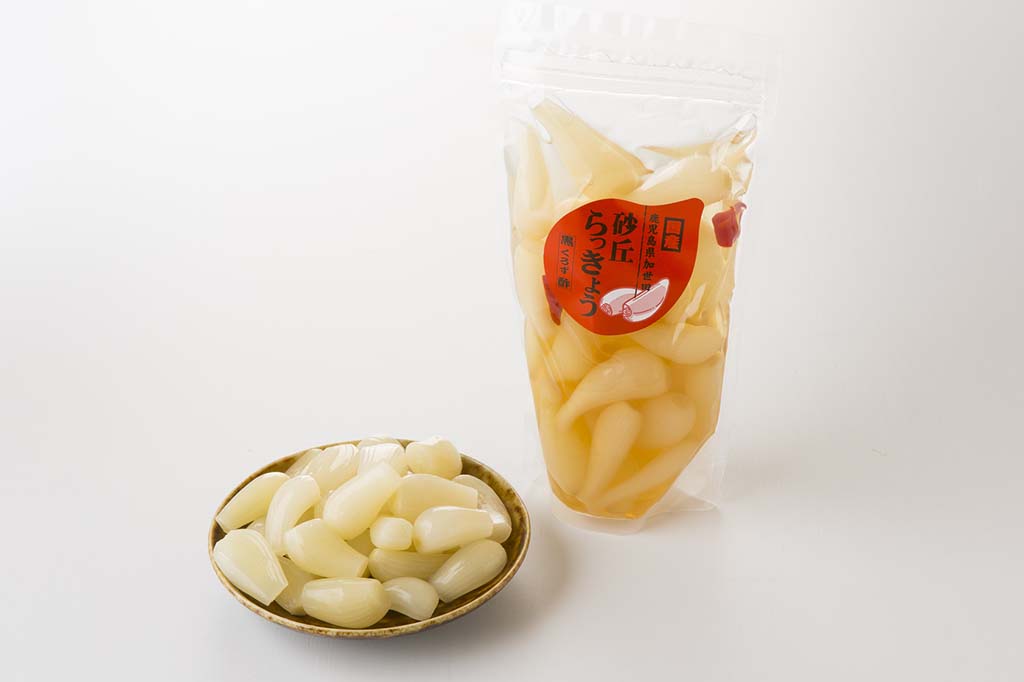
Kaseda Town ranks second in Japan in terms of production of Rakkyo. It is cultivated mostly in the Fukiagehama area facing the East China Sea, and is named "Sand Hill Rakkyo" in reference to the sand dunes of Fukiagehama. However, that is not the only origin of the name. In fact, Kaseda is a sandy area with low water retention capacity and the land is too thin to grow crops. Rakkyo is rooted in such land and has a crunchy texture. From April to May, fresh Rakkyo is sold at roadside stations. Pickled Rakkyo is also a convenient souvenir.
© P.K.N.
Here's what you need to eat Warming meal
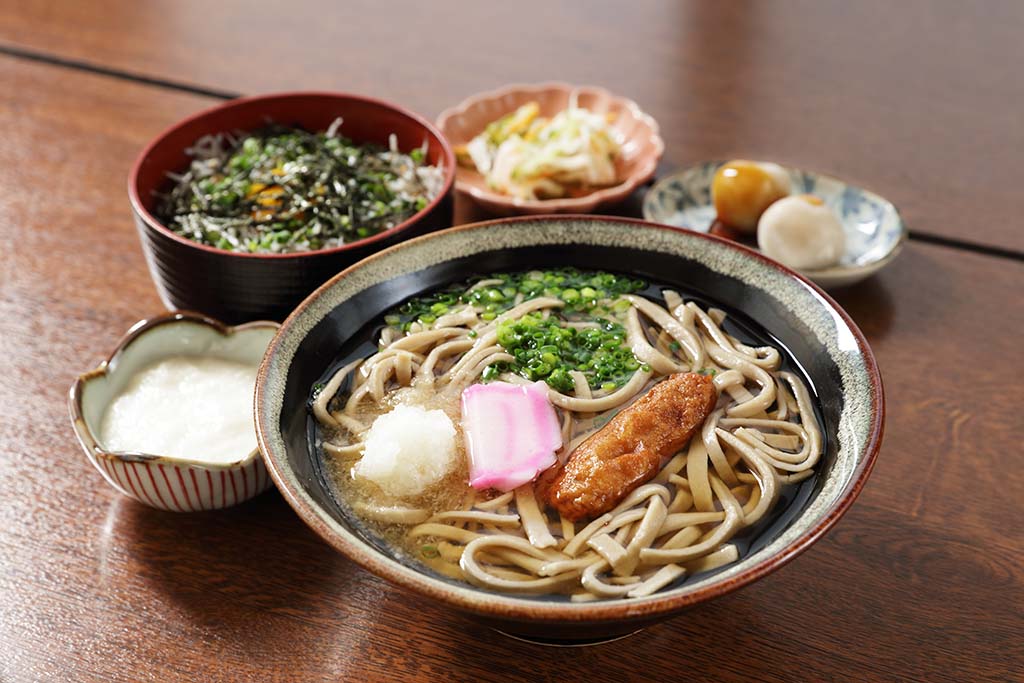
The restaurant at the roadside station offers a wide variety of soba menus using 100% local buckwheat flour. Both hot and cold dishes are appealing, but to enjoy the true flavor of soba, you should definitely choose the "Attaka Set". The hot soba comes with a bowl of shirasu (baby sardines), buckwheat dumplings, yamaimo (Japanese yam), and a small bowl of cooked food. The soba comes in a thick, slightly sweet Kyushu soy sauce broth, topped with satsuma-age and naruto (fish cake). The aroma of soba fills your nostrils as you slurp down the hot noodles. After feeling the noodles bounce on your tongue, you will be relieved by the sensation of the noodles soaking into your body. Soba can be replaced with udon if desired. 770 yen (tax included).
Around Roadside Station Kimbo Kibokan
Soba noodle making experience
I'm proud of this too.
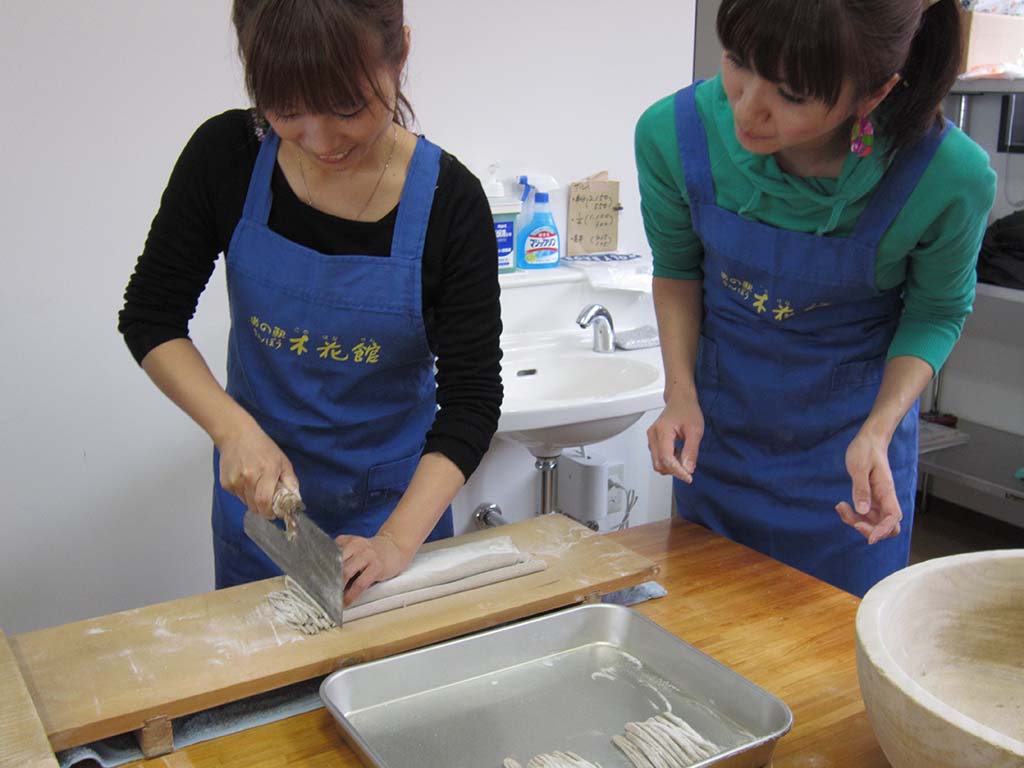
If you make a reservation, you can experience soba noodle making at the workshop, except during the year-end and New Year holidays. The soba-making experience lasts about 40 minutes. The fee is 2,980 yen per person to make soba for four people, with an additional 550 yen per person for two or more people. If you have an infant or toddler, the restaurant will negotiate with you. Visitors can also eat the soba they made at the restaurant.

